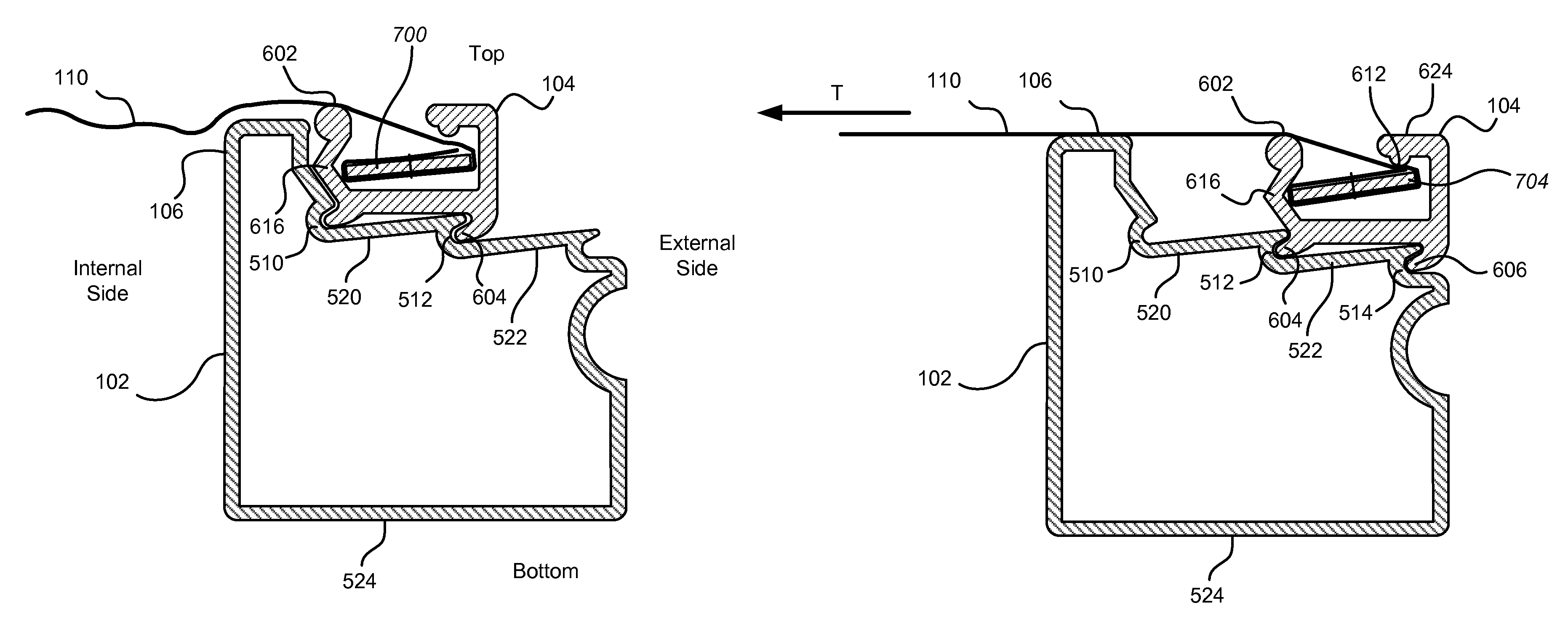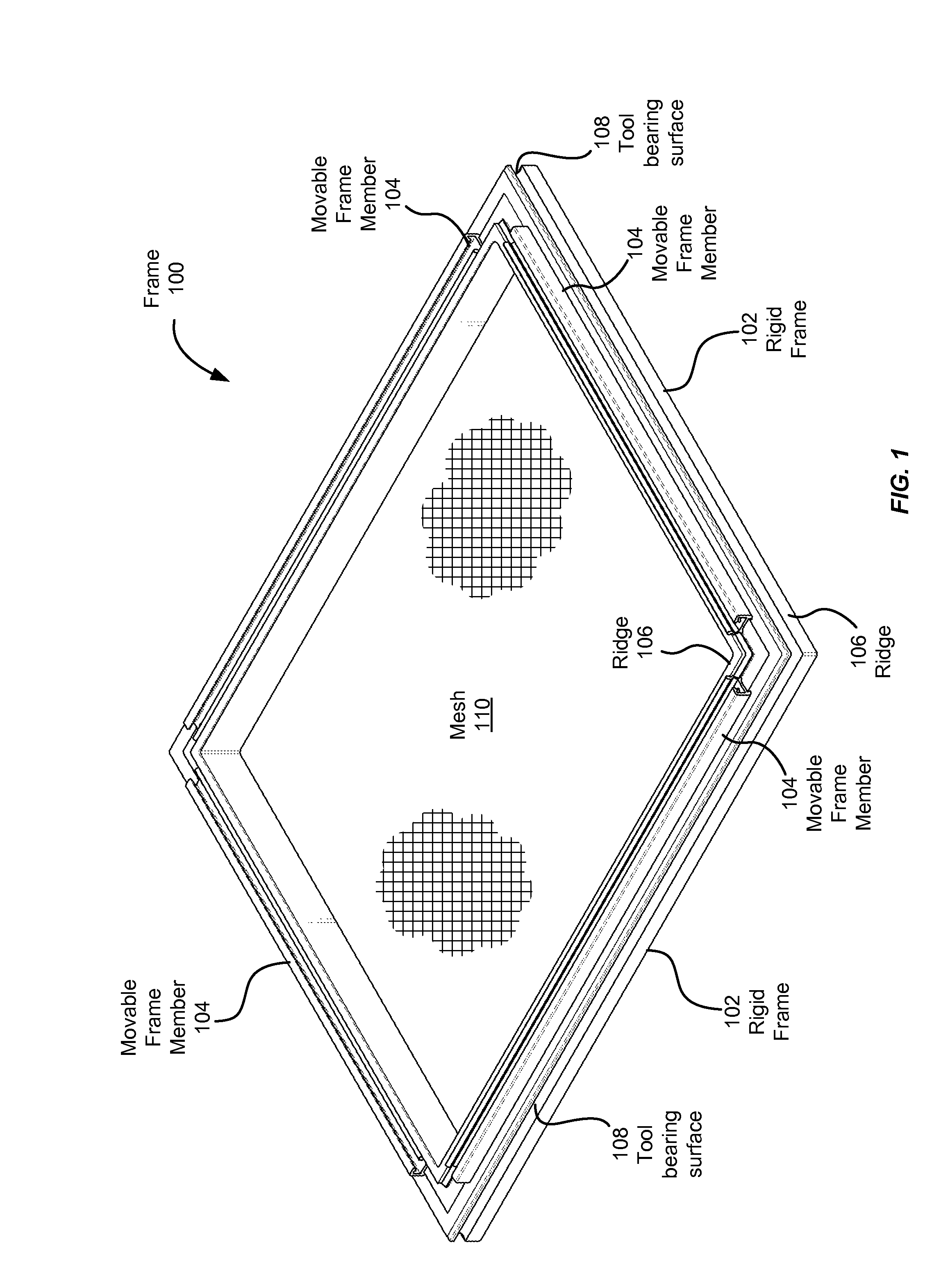Screen-printing frame
a frame and screenprinting technology, applied in printing, door/window protective devices, coatings, etc., can solve the problems of destroying the mesh, reducing the service life of the frame, and affecting the quality of the screenprinting, so as to reduce or avoid the effect of tearing the mesh
- Summary
- Abstract
- Description
- Claims
- Application Information
AI Technical Summary
Benefits of technology
Problems solved by technology
Method used
Image
Examples
Embodiment Construction
[0039]FIG. 1 is a perspective view of an embodiment of a frame 100 for screen tensioning and printing, in accordance with aspects of the invention. FIGS. 2A and 2B are a top plan view and a side elevation, respectively, of the frame 100 of FIG. 1. The frame 100 includes a rigid frame 102 and movable frame members 104. The frame 100 may be characterized as having an internal region or internal side and an external region or side. The internal region is bounded by the frame and includes the plane and center of the frame 100. The rigid frame 102 includes a ridge 106. The ridge illustrated in FIG. 1 is continuous around a periphery of the rigid frame 102 along an inner side and may separate the internal side of the frame 100 from the external side. The rigid frame further includes a tool bearing surface 108 comprising a groove disposed longitudinally along the external side of the rigid frame and substantially continuous around the periphery the rigid frame 102. Mesh 110 is suspended on...
PUM
| Property | Measurement | Unit |
|---|---|---|
| angle | aaaaa | aaaaa |
| friction | aaaaa | aaaaa |
| weight | aaaaa | aaaaa |
Abstract
Description
Claims
Application Information
 Login to View More
Login to View More - R&D
- Intellectual Property
- Life Sciences
- Materials
- Tech Scout
- Unparalleled Data Quality
- Higher Quality Content
- 60% Fewer Hallucinations
Browse by: Latest US Patents, China's latest patents, Technical Efficacy Thesaurus, Application Domain, Technology Topic, Popular Technical Reports.
© 2025 PatSnap. All rights reserved.Legal|Privacy policy|Modern Slavery Act Transparency Statement|Sitemap|About US| Contact US: help@patsnap.com



